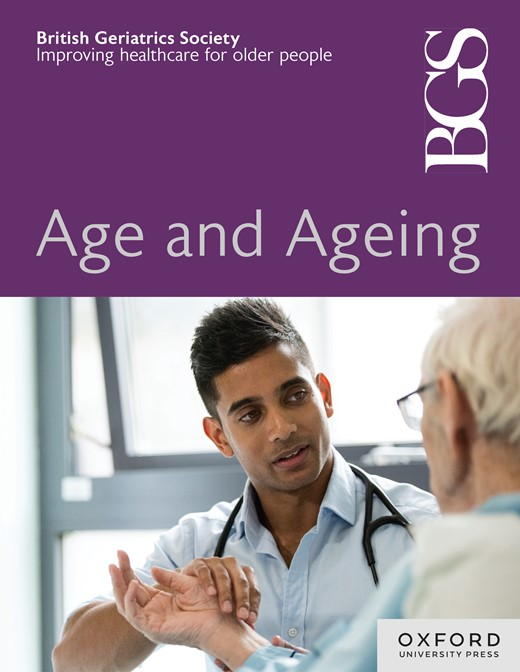2441 Reducing anticholinergic burden in older adults from an acute geriatric Ward—a quality improvement activity using education
IF 6
2区 医学
Q1 GERIATRICS & GERONTOLOGY
引用次数: 0
Abstract
Introduction In older adults, anticholinergic burden (ACB) is associated with serious adverse effects including delirium, falls, functional decline, cognitive decline and death. We carried out a quality improvement project in an inpatient acute geriatric ward, aiming to reduce the percentage of older adults with high ACB scores on discharge by 15% from a baseline of 48% over a period of 3 months. Method A pre-interventional analysis of all patients discharged from a single acute geriatric ward in Changi General Hospital was performed. A pre-intervention survey was conducted to assess awareness among physicians of ACB and tools used. Fish-bone diagram, pareto chart and driver diagram were used to identify root causes, highlight the barriers and to prioritise interventions. Interventions in the form of educational posters on ACB, non-pharmacological management of delirium and behavioural symptoms of dementia were made available at the ward. ACB scores were generated for all patients on discharge, using an online ACB calculator [1], which combined the use of 2 validated scales: anticholinergic cognitive burden scale [2] and the German anticholinergic burden scale [3]. Results 396 patients were included in the analysis. Median percentage of patients with high ACB scores (≥3) on discharge was reduced from 48.4% pre-intervention to 16.1% post-intervention. Out of 14 physicians surveyed pre-intervention, 21.4% was unaware of the term ‘ACB’ and availability of ACB scoring systems. Conclusion An education approach is effective in raising awareness and reducing use of anticholinergic medications in an acute geriatric ward. This highlights the importance of incorporating ACB awareness and the tools into geriatric department teaching programmes. References 1. ACB Calculator. (n.d.). https://www.acbcalc.com/. 2. Boustani M., et al.Ageing Health. 2008. 4(3). 311–320. 3. Kiesel EK. et al.BMC Geriatr. 2018;18:239.2441减轻急性老年病房老年人的抗胆碱能负担——利用教育提高质量的活动
在老年人中,抗胆碱能负荷(ACB)与严重的不良反应相关,包括谵妄、跌倒、功能下降、认知能力下降和死亡。我们在一个急性老年住院病房开展了一项质量改进项目,目的是在3个月的时间里,将出院时ACB评分高的老年人的比例从48%的基线降低15%。方法对樟宜综合医院急性老年病房出院的所有患者进行介入前分析。进行了干预前调查,以评估医生对ACB的认识和使用的工具。使用鱼骨图、帕累托图和驱动图来确定根本原因,突出障碍并确定干预措施的优先顺序。在病房提供了有关ACB的教育海报、谵妄和痴呆行为症状的非药物管理等干预措施。使用在线ACB计算器[1]对所有出院患者进行ACB评分,该计算器结合使用两种有效量表:抗胆碱能认知负担量表[2]和德国抗胆碱能负担量表[3]。结果396例患者纳入分析。出院时ACB评分较高(≥3)的患者中位数百分比从干预前的48.4%降至干预后的16.1%。在干预前接受调查的14名医生中,21.4%的人不知道“ACB”一词和ACB评分系统的可用性。结论教育是提高急性老年病房抗胆碱能药物使用意识和减少用药的有效方法。这突出了将ACB意识和工具纳入老年科教学计划的重要性。引用1。ACB计算器。(无日期)。https://www.acbcalc.com/。2. 等。老龄化与健康。2008。4(3)。311 - 320。3. 利埃克。[j] .中华医学杂志,2018;18(3):391 - 391。
本文章由计算机程序翻译,如有差异,请以英文原文为准。
求助全文
约1分钟内获得全文
求助全文
来源期刊

Age and ageing
医学-老年医学
CiteScore
9.20
自引率
6.00%
发文量
796
审稿时长
4-8 weeks
期刊介绍:
Age and Ageing is an international journal publishing refereed original articles and commissioned reviews on geriatric medicine and gerontology. Its range includes research on ageing and clinical, epidemiological, and psychological aspects of later life.
 求助内容:
求助内容: 应助结果提醒方式:
应助结果提醒方式:


